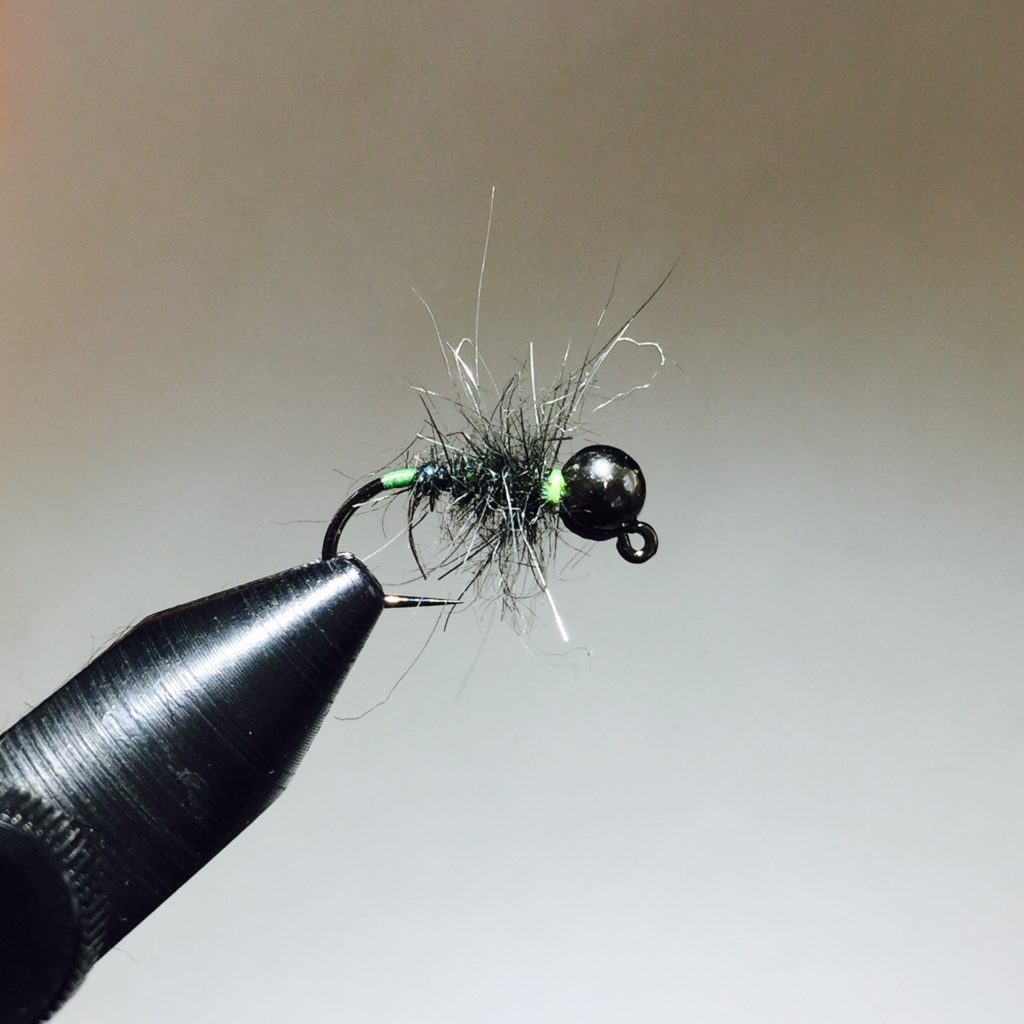
Competition angler Alec Baker told me about Loren Williams’ fly patterns. He is a sophisticated tightliner, who has competed on the national and global stages.
Williams has a great way to create a very spiky look via a “touch dub.” You put wax on the thread, apply some wisps of dubbing, and then rotate clockwise the thread to cord up everything. (His tutorial here.)
I at times use that method when I make a Walt’s or Sexy Walt’s with fluorescent thread. When wet, the nymph’s thread under body will glow through, creating a very interesting visual for trout.
Up top is a black Walt’s with some chartreuse. I tie them in other colors, too, and you can vary both the dubbing and thread colors and go wild. You also can tie them in different sizes, down to a #22, although you need different materials for that.
A “touch dub” Walt’s is one of my go-to patterns when nothing else is working. It really has saved me from the skunk on many August/September outings.
Discover more from BlogFlyFish.com
Subscribe to get the latest posts sent to your email.

I’ve got to be honest here, I find alot of these “new tight lining ties”, though said to be effective, very unnatural and getting further and further away from the true art of tying and amounts to nothing more than throwing a shot at the head and a couple wraps of dubbing. I’m sure they work on stockies, but might be hard pressed to find them fooling alot of wold fish, I much prefer sticking with the classic patterns that for the most part had alot more thought put into them. Just my opinion.
I think different perspectives are great, honestly! I find that the simple nymphs work really well on the wild/holdover fish at the Farmington, at least for me.
And, the tightlining technique and the nymphs used have developed for a reason: They work. They’ve worked at competitions, where you’re facing the best anglers in the country and world, often, fishing the same runs after they do. If not, the patterns would not have proliferated to the mainstream via word of mouth. These anglers are not chasing fresh stockies. They’re usually chasing wild fish, particularly in Europe.
Last, the nymphs can be used using indicators. When I do float a strike indicator, I’m not switching flies. I’m using the same ones.
But, to echo your sentiment, a close #2 nymph for me is a Pheasant Tail variant, the “Frenchie.” Those take some time to tie well (and, I sometimes add three micro-fibbetts and painstakingly create a three-pronged tail), but at the end of the day, it really is just a Pheasant Tail. That fly and Hare’s Ears, in various sizes, do very well, too….
To some extent I do agree with Johnny’s perspective on the art of tying. I save my artful tying for flies meant to be fished in parts of the water column above the bottom.
For point flies or anchors, the simpler the better IMO as I do lose a crapload of them during fishing. Dubbing with jig head flies work great for that, and do pick up fish, even heavily fished browns. When I lose them, no big deal.
Agree: I spend much more time on dries. I lose more nymphs than dries, and so, don’t want to spend that much time on the former. Also, I think pressured fish respond well to simple nymphs–there are fewer features to which they can object. It’s why the Walt’s/Sexy Walt’s is the most productive nymph for me, whether it be for fresh stockies, wild fish or holdovers.
Also, I spend more time on dropper flies than anchor flies. Regarding the former, tying a #22 emerger takes time….
Love it – thanks for putting that info out there.
I’m here to serve!
What do you rib this fly with?
Extra-small UTC wire.